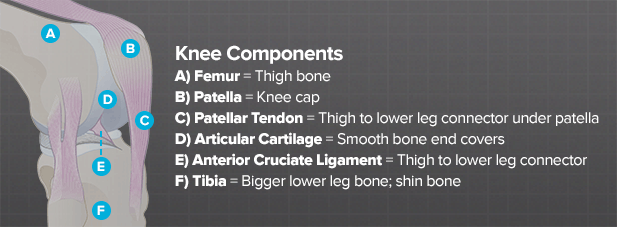
A normal knee joint consists of the thighbone (femur), the shinbone (tibia), the kneecap (patella), tendons, ligaments and cartilage.
There are two bones in the lower leg, the tibia (shinbone) and the fibula, which is a smaller bone on the back outer side of the lower leg.
Two ligaments are located on the outside of the knee joint. These ligaments connect the femur to the tibia and the fibula. They help manage side-to-side movements in the knee. Two additional ligaments (cruciate ligaments) inside the knee stretch between the femur and the tibia. These ligaments help control the forward and backward movement of the tibia in relation to the femur.
The patella is a triangular bone at the front of the knee. It is attached by tendons to the quadriceps muscles of the thigh and allows the knee to straighten.
The bone surfaces of the femur and tibia have a smooth durable cover of articular cartilage that cushions the ends of the bones and enables them to move easily.
When all of these parts work in harmony, the knee joint can move easily and without pain.